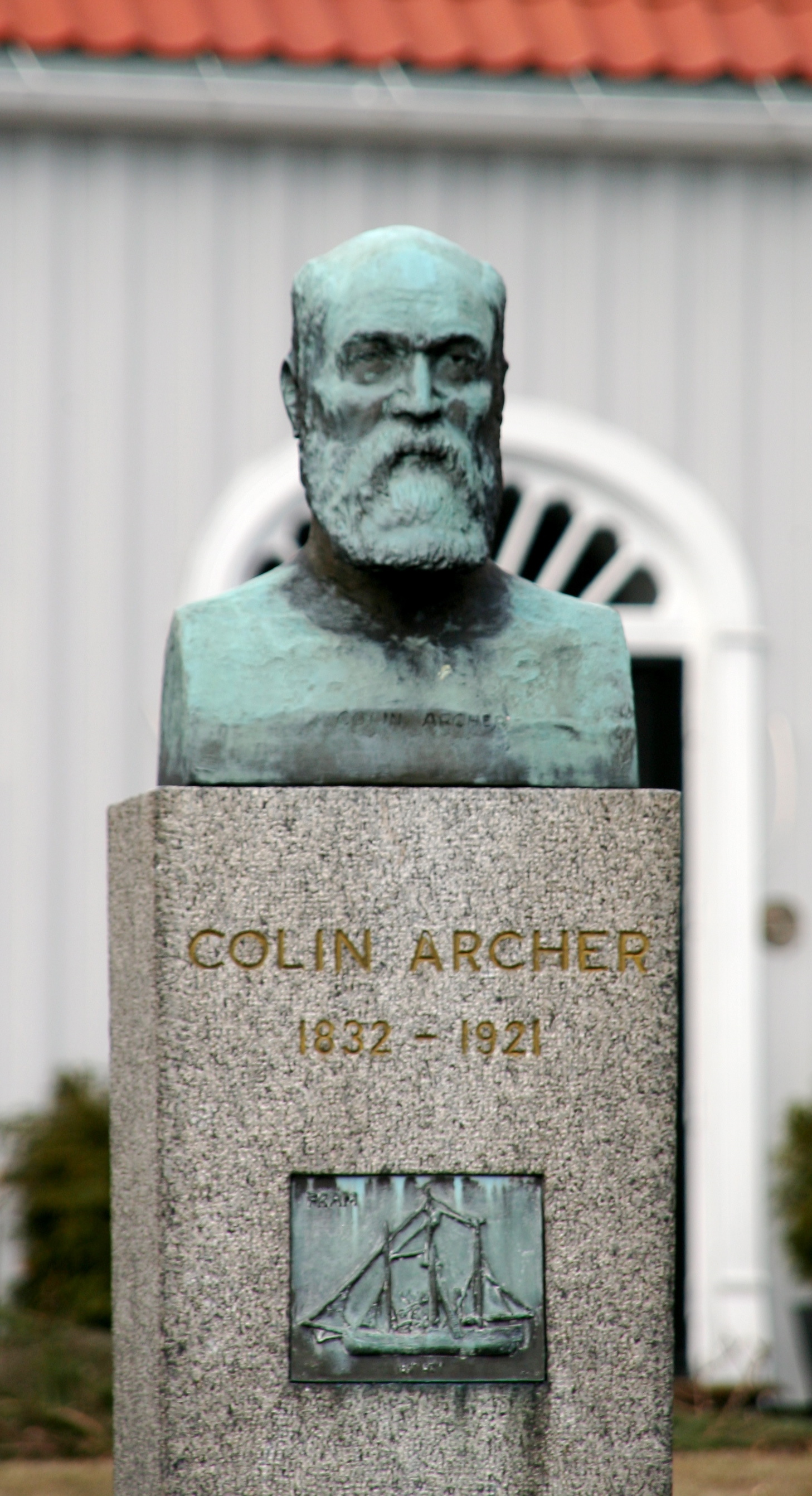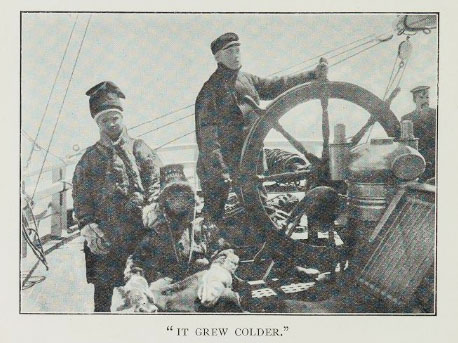|
Archer Peak
Archer Peak is a Summit (topography), peak, high, on the southwest extremity of Possession Island, Antarctica. It was named by the Southern Cross Expedition, British Antarctic Expedition, 1898–1900, either for A. Archer, Esq., of Australia, mentioned in the preface to Carsten Borchgrevink, Carsten Borchgrevink's ''First on the Antarctic Continent'', or for Colin Archer who designed Borchgrevink's vessel, the SS Southern Cross (1886), SS ''Southern Cross''. References * Mountains of Victoria Land Borchgrevink Coast {{BorchgrevinkCoast-geo-stub ... [...More Info...] [...Related Items...] OR: [Wikipedia] [Google] [Baidu] |
Possession Island, Antarctica
The Possession Islands are a group of small islands and Rock (geology), rocks extending over an area of about , lying in the western part of the Ross Sea, lying south-east of Cape McCormick and east of Cape Roget, in Victoria Land, Antarctica. The Possession Islands were named by Captain James Clark Ross, Royal Navy, in commemoration of the planting of the British flag here on January 12, 1841. Possession Island Possession Island is a rock (geology), rocky island nearly long. The northernmost and largest of the group, it is located at . Archer Peak is a mountain on the southernmost edge of the island. Important Bird Area A site comprising the whole island has been designated an Important Bird Area (IBA) by BirdLife International because it supports about 111,000 breeding pairs of Adélie penguins, based on ground counts made from 1981 to 2012. A significant south polar skua colony is also present on the island. See also * Composite Antarctic Gazetteer * List of Antarctic a ... [...More Info...] [...Related Items...] OR: [Wikipedia] [Google] [Baidu] |
Borchgrevink Coast
The Borchgrevink Coast is that portion of the coast of Victoria Land between Cape Adare and Cape Washington. The name was recommended by New Zealand Antarctic Place-Names Committee in 1961 after Carsten Borchgrevink, a member of Henrik Johan Bull's expedition to this area, 1894–95, and leader of the British Antarctic Expedition, 1898–1900, the first to winter on the continent, at Cape Adare. Landmarks *Agate Peak is a peak situated in the southeast area of the Intention Nunataks, at the southwest margin of Evans Neve within the Borchgrevink Coast. So named by the New Zealand Antarctic Place-Names Committee because agate and other semi-precious stones were found here by the Southern Party of New Zealand Geological Survey Antarctic Expedition, 1966–67. See also *Borchgrevink Canyon Borchgrevink Canyon () is an undersea canyon on the continental rise east of Iselin Bank in the Ross Sea. It was named in association with Borchgrevink Coast The Borchgrevink Coast is that portio ... [...More Info...] [...Related Items...] OR: [Wikipedia] [Google] [Baidu] |
Victoria Land
Victoria Land is a region in eastern Antarctica which fronts the western side of the Ross Sea and the Ross Ice Shelf, extending southward from about 70°30'S to 78°00'S, and westward from the Ross Sea to the edge of the Antarctic Plateau. It was discovered by Captain James Clark Ross in January 1841 and named after Queen Victoria. The rocky promontory of Minna Bluff is often regarded as the southernmost point of Victoria Land, and separates the Scott Coast to the north from the Hillary Coast of the Ross Dependency to the south. The region includes ranges of the Transantarctic Mountains and the McMurdo Dry Valleys (the highest point being Mount Abbott in the Northern Foothills), and the flatlands known as the Labyrinth. The Mount Melbourne is an active volcano in Victoria Land. Early explorers of Victoria Land include James Clark Ross and Douglas Mawson. In 1979, scientists discovered a group of 309 meteorites in Antarctica, some of which were found near the Allan Hills in ... [...More Info...] [...Related Items...] OR: [Wikipedia] [Google] [Baidu] |
Antarctica
Antarctica () is Earth's southernmost and least-populated continent. Situated almost entirely south of the Antarctic Circle and surrounded by the Southern Ocean, it contains the geographic South Pole. Antarctica is the fifth-largest continent, being about 40% larger than Europe, and has an area of . Most of Antarctica is covered by the Antarctic ice sheet, with an average thickness of . Antarctica is, on average, the coldest, driest, and windiest of the continents, and it has the highest average elevation. It is mainly a polar desert, with annual precipitation of over along the coast and far less inland. About 70% of the world's freshwater reserves are frozen in Antarctica, which, if melted, would raise global sea levels by almost . Antarctica holds the record for the lowest measured temperature on Earth, . The coastal regions can reach temperatures over in summer. Native species of animals include mites, nematodes, penguins, seals and tardigrades. Where vegetation o ... [...More Info...] [...Related Items...] OR: [Wikipedia] [Google] [Baidu] |
Summit (topography)
A summit is a point on a surface that is higher in elevation than all points immediately adjacent to it. The topographic terms acme, apex, peak (mountain peak), and zenith are synonymous. The term (mountain top) is generally used only for a mountain peak that is located at some distance from the nearest point of higher elevation. For example, a big, massive rock next to the main summit of a mountain is not considered a summit. Summits near a higher peak, with some prominence or isolation, but not reaching a certain cutoff value for the quantities, are often considered ''subsummits'' (or ''subpeaks'') of the higher peak, and are considered part of the same mountain. A pyramidal peak is an exaggerated form produced by ice erosion of a mountain top. Summit may also refer to the highest point along a line, trail, or route. The highest summit in the world is Mount Everest with a height of above sea level. The first official ascent was made by Tenzing Norgay and Sir Edmund Hillary ... [...More Info...] [...Related Items...] OR: [Wikipedia] [Google] [Baidu] |
Southern Cross Expedition
The ''Southern Cross'' Expedition, otherwise known as the British Antarctic Expedition, 1898–1900, was the first British venture of the Heroic Age of Antarctic Exploration, and the forerunner of the more celebrated journeys of Robert Falcon Scott and Ernest Shackleton. The brainchild of the Anglo-Norwegian explorer Carsten Borchgrevink, it was the first expedition to over-winter on the Antarctic mainland, the first to visit the Great Ice Barrier—later known as the Ross Ice Shelf—since Sir James Clark Ross's groundbreaking expedition of 1839 to 1843, and the first to effect a landing on the Barrier's surface. It also pioneered the use of dogs and sledges in Antarctic travel. The expedition was privately financed by the British magazine publisher Sir George Newnes. Borchgrevink's party sailed in the , and spent the southern winter of 1899 at Cape Adare, the northwest extremity of the Ross Sea coastline. Here they carried out an extensive programme of scientific observations, ... [...More Info...] [...Related Items...] OR: [Wikipedia] [Google] [Baidu] |
Carsten Borchgrevink
Carsten Egeberg Borchgrevink (1 December 186421 April 1934) was an Anglo-Norwegian polar explorer and a pioneer of Antarctic travel. He inspired Sir Robert Falcon Scott, Sir Ernest Shackleton, Roald Amundsen, and others associated with the Heroic Age of Antarctic Exploration. Borchgrevink began his exploring career in 1894 by joining a Norwegian whaling expedition, during which he became one of the first people to set foot on the Antarctic mainland. This achievement helped him to obtain backing for his ''Southern Cross'' expedition, which became the first to overwinter on the Antarctic mainland, and the first to visit the Great Ice Barrier since the expedition of Sir James Clark Ross nearly sixty years earlier. The expedition's successes were received with only moderate interest by the publicand by the British geographical establishment, whose attention was by then focused on Scott's upcoming ''Discovery'' expedition. Some of Borchgrevink's colleagues were critical of his lea ... [...More Info...] [...Related Items...] OR: [Wikipedia] [Google] [Baidu] |
Colin Archer
Colin Archer (22 July 1832 – 8 February 1921) was a Norwegian naval architect and shipbuilder known for his seaworthy pilot and rescue boats and the larger sailing and polar ships. His most famous ship is the ''Fram'', used on both in Fridtjof Nansen's and Roald Amundsen's polar expeditions. He was born at Tollerodden in Larvik, Norway, where he also had his own house built and his boatyard. Early life Colin Archer was born in Larvik in southern Norway as the 12th of 13 children to parents who immigrated to Norway from Scotland in 1825. Before his career in naval architecture, he spent time as a farmer and administrator in Queensland, Australia with several of his brothers, including David who first arrived in Sydney in 1834. During his time as an administrator he was contracted to produce a map of the Fitzroy River. Their settlement is now known as Gracemere Homestead. In 1861, Archer returned to Larvik and undertook the study of practical and theoretical shipbuildi ... [...More Info...] [...Related Items...] OR: [Wikipedia] [Google] [Baidu] |
SS Southern Cross (1886)
SS ''Southern Cross'' was a steam-powered sealing vessel that operated primarily in Norway and Newfoundland and Labrador. She was lost at sea returning from the seal hunt on March 31, 1914, killing all 174 men aboard in the same storm that killed 78 crewmen from the , a collective tragedy that became known as the "1914 Newfoundland Sealing Disaster". Background The vessel was commissioned as the whaler ''Pollux'' at Arendal, Norway in 1886, was barque-rigged, registered 520 tons gross, and was long overall. ''Pollux'' was designed by Colin Archer, the renowned Norwegian shipbuilder. Archer had designed and built Nansen's ship '' Fram,'' which in 1896 had returned unscathed from its long drift in the northern polar ocean during Nansen's "Farthest North" expedition, 1893–96. ''Pollux'' was sold to the Norwegian explorer Carsten Borchgrevink in 1897 ''and'' renamed ''Southern Cross'', for the Southern Cross Expedition. Like several of the historic polar ships her p ... [...More Info...] [...Related Items...] OR: [Wikipedia] [Google] [Baidu] |
Mountains Of Victoria Land
A mountain is an elevated portion of the Earth's crust, generally with steep sides that show significant exposed bedrock. Although definitions vary, a mountain may differ from a plateau in having a limited summit area, and is usually higher than a hill, typically rising at least 300 metres (1,000 feet) above the surrounding land. A few mountains are isolated summits, but most occur in mountain ranges. Mountains are formed through tectonic forces, erosion, or volcanism, which act on time scales of up to tens of millions of years. Once mountain building ceases, mountains are slowly leveled through the action of weathering, through slumping and other forms of mass wasting, as well as through erosion by rivers and glaciers. High elevations on mountains produce colder climates than at sea level at similar latitude. These colder climates strongly affect the ecosystems of mountains: different elevations have different plants and animals. Because of the less hospitable terrain and ... [...More Info...] [...Related Items...] OR: [Wikipedia] [Google] [Baidu] |








